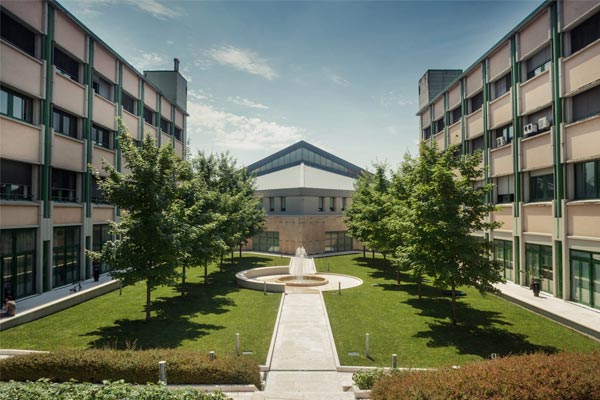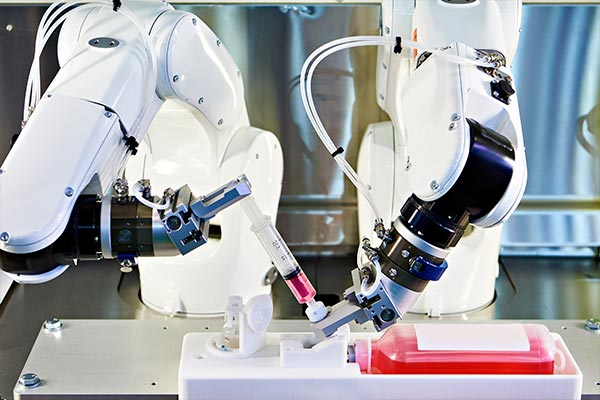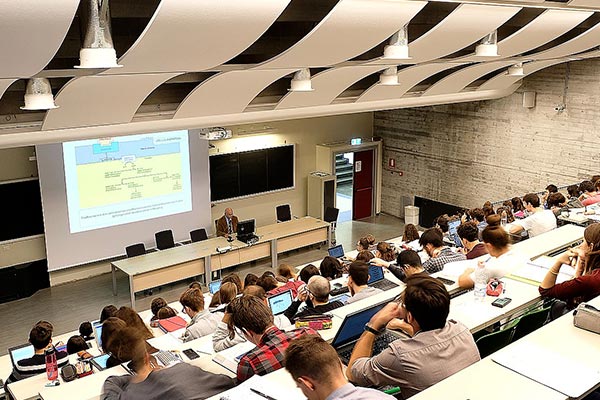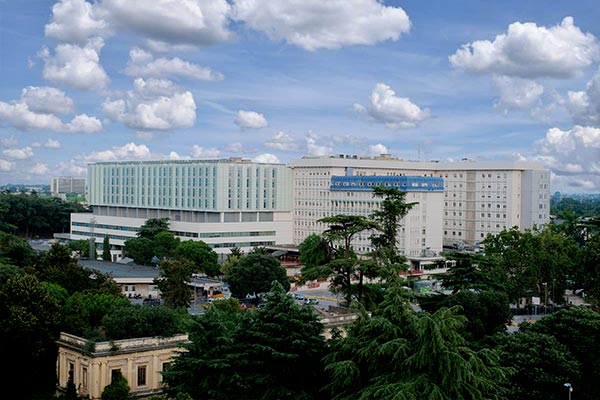|
PhD in Intelligent Systems Engineering
|
Generative AI (part I) (2025/2026)
|
1.5
|
|
1.5
|
|
|
Bachelor's degree in Human Centered Medical System Engineering
Course partially running
|
Artificial Intelligence (2024/2025)
|
6
|

|
4
|
(Teoria)
|
|
Master's Degree in in Computer Engineering for Intelligent Systems
Course partially running
|
Data management and machine intelligence (2024/2025)
|
12
|

|
6
|
DEEP LEARNING
|
|
Bachelor's degree in Human Centered Medical System Engineering
Course partially running
|
Development and life cycle of software of artificial intelligence software (2024/2025)
|
1
|

|
1
|
|
|
Bachelor's degree in Computer Science
Course partially running
|
Signal and image processing (2024/2025)
|
6
|

|
4
|
(Teoria)
|
|
Bachelor's degree in Human Centered Medical System Engineering
Course partially running
|
Artificial Intelligence (2023/2024)
|
6
|

|
4
|
(Teoria)
|
|
Master's degree in Computer Engineering for Robotics and Smart Industry
Course partially running
|
Deep Learning (2023/2024)
|
6
|

|
1
|
(Laboratorio)
|
|
5
|
(Teoria)
|
|
Master's degree in Computer Science and Engineering
Course partially running
|
Fundamentals of Machine Learning (2023/2024)
|
6
|

|
1
|
(Laboratorio)
|
|
5
|
(Teoria)
|
|
Bachelor's degree in Computer Science
Course partially running
|
Signal and image processing (2023/2024)
|
6
|

|
4
|
(Teoria)
|
|
Master's degree in Computer Engineering for Robotics and Smart Industry
Course partially running
|
Deep Learning (2022/2023)
|
6
|

|
5
|
(Teoria)
|
|
1
|
(Laboratorio)
|
|
Master's degree in Computer Science and Engineering
Course partially running
|
Fundamentals of Machine Learning (2022/2023)
|
6
|

|
5
|
(Teoria)
|
|
1
|
(Laboratorio)
|
|
Bachelor's degree in Computer Science
Course partially running
|
Signal and image processing (2022/2023)
|
6
|

|
4
|
(Teoria)
|
|
Master's degree in Computer Engineering for Robotics and Smart Industry
Course partially running
|
Deep Learning (2021/2022)
|
6
|

|
4
|
(Teoria)
|
|
1
|
(Laboratorio)
|
|
Master's degree in Computer Science and Engineering
Course partially running
|
Fundamentals of Machine Learning (2021/2022)
|
6
|

|
5
|
(Teoria)
|
|
1
|
(Laboratorio)
|
|
Bachelor's degree in Computer Science
Course partially running
|
Signal and image processing (2021/2022)
|
6
|

|
4
|
(Teoria)
|
|
Master's degree in Computer Science and Engineering
Course partially running
|
Advanced recognition systems (2020/2021)
|
6
|

|
5
|
(Teoria)
|
|
1
|
(Laboratorio)
|
|
Master's degree in Computer Science and Engineering
Course partially running
|
Fundamentals of Machine Learning (2020/2021)
|
6
|

|
5
|
(Teoria)
|
|
1
|
(Laboratorio)
|
|
Bachelor's degree in Computer Science
Course partially running
|
Signal and image processing (2020/2021)
|
6
|

|
4
|
(Teoria)
|
|
Master's degree in Computer Science and Engineering
Course partially running
|
Advanced recognition systems (2019/2020)
|
6
|

|
5
|
(Teoria)
|
|
1
|
(Laboratorio)
|
|
Bachelor's degree in Computer Science
Course partially running
|
Signal and image processing (2019/2020)
|
6
|

|
2
|
[II turno] (Laboratorio)
|
|
4
|
(Teoria)
|
|
2
|
[I turno] (Laboratorio)
|
|
Master's degree in Computer Science and Engineering
Course partially running
|
Advanced recognition systems (2018/2019)
|
6
|

|
5
|
(Teoria)
|
|
1
|
(Laboratorio)
|
|
Bachelor's degree in Computer Science
Course partially running
|
Signal and image processing (2018/2019)
|
6
|

|
2
|
[Secondo turno] (Laboratorio)
|
|
4
|
(Teoria)
|
|
2
|
[Primo turno] (Laboratorio)
|
|
Master's degree in Computer Science and Engineering
Course partially running
|
Advanced recognition systems (2017/2018)
|
6
|

|
6
|
|
|
Master's degree in Computer Science and Engineering
Course partially running
|
Human-computer Interaction (2017/2018)
|
6
|

|
2
|
|
|
Master's degree in Computer Science and Engineering
Course partially running
|
Machine Learning & Pattern Recognition (2017/2018)
|
6
|

|
6
|
|
|
Professional Master's programme in Computer game development
|
Fundamentals of Artificial Intelligence (2017/2018)
|
2
|
|
4
|
|
|
Master's degree in Computer Science and Engineering
Course partially running
|
Advanced recognition systems (2016/2017)
|
6
|
|
6
|
|
|
Master's degree in Medical Bioinformatics
Course partially running
|
Computational analysis of biological structures and networks (2016/2017)
|
6
|
|
1
|
|
|
Master's degree in Computer Science and Engineering
Course partially running
|
Human-computer Interaction (2016/2017)
|
6
|

|
2
|
|
|
Master's degree in Computer Science and Engineering
Course partially running
|
Machine Learning & Pattern Recognition (2016/2017)
|
6
|
|
6
|
|
|
Master's degree in Computer Science and Engineering
Course partially running
|
Advanced recognition systems (2015/2016)
|
6
|
|
6
|
|
|
Master's degree in Computer Science and Engineering
Course partially running
|
Human-computer Interaction (2015/2016)
|
6
|
|
2
|
|
|
Master's degree in Computer Science and Engineering
Course partially running
|
Machine Learning & Pattern Recognition (2015/2016)
|
6
|
|
6
|
|
|
Master's degree in Computer Science and Engineering
Course partially running
|
Advanced recognition systems (2014/2015)
|
6
|
|
6
|
|
|
Master's degree in Computer Science and Engineering
Course partially running
|
Machine Learning & Pattern Recognition (2014/2015)
|
6
|
|
6
|
|
|
Master's degree in Computer Science and Engineering
Course partially running
|
Advanced recognition systems (2013/2014)
|
6
|
|
6
|
|
|
Master's degree in Computer Science and Engineering
Course partially running
|
Machine Learning & Pattern Recognition (2013/2014)
|
6
|
|
6
|
|
|
Bachelor's degree in Bioinformatics
Course partially running
|
Information recognition and retrieval for bioinformatics
(2012/2013)
|
12
|
|
3
|
(Laboratorio)
|
|
Master's degree in Computer Science and Engineering
Course partially running
|
Machine Learning & Pattern Recognition (2012/2013)
|
6
|
|
6
|
|
|
Bachelor's degree in Bioinformatics
Course partially running
|
Information recognition and retrieval for bioinformatics
(2011/2012)
|
12
|
|
3
|
(Laboratorio)
|
|
Master's degree in Computer Science and Engineering
Course partially running
|
Machine Learning & Pattern Recognition (2011/2012)
|
6
|
|
6
|
|
|
Master's degree in Computer Science and Engineering
Course partially running
|
Machine Learning & Pattern Recognition (2010/2011)
|
6
|
|
6
|
|
|
Master's degree in Computer Science and Engineering
Course partially running
|
Advanced recognition systems (2009/2010)
|
6
|
|
6
|
|
|
Master's degree in Computer Science and Engineering
Course partially running
|
Machine Learning & Pattern Recognition (2009/2010)
|
6
|
|
6
|
|
|
Masters in Intelligent and Multimedia Systems
|
Human-computer Interaction Complements (2008/2009)
|
5
|
|
5
|
|
|
Masters in Publishing and Multimedia Communication (until 2007-2008)
Course not running
|
Communication and interaction (s) (2007/2008)
|
6
|
|
6
|
|
|
Masters in Intelligent and Multimedia Systems
|
Human-computer Interaction Complements (2007/2008)
|
5
|
|
5
|
|
|
Masters in Publishing and Multimedia Communication (until 2007-2008)
Course not running
|
Communication and interaction (s) (2006/2007)
|
6
|
|
6
|
|
|
Master's degree in Nursing and Obstetrics
Course not running
|
Epidemiology and statistics (2006/2007)
|
8
|
|
2
|
Informatica applicata
|
|
Masters in Publishing and Multimedia Communication (until 2007-2008)
Course not running
|
Communication and interaction (s) (2005/2006)
|
6
|
|
6
|
|








 cristani
cristani univr
univr
